Consistently Green
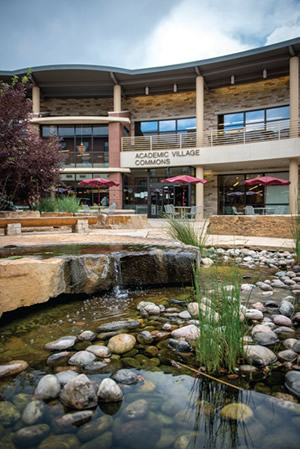
PHOTOS COURTESY OF COLORADO STATE UNIVERITY
Sustainability on campus is more than just turning off lights or instituting a recycling program. Schools have gone “all in” with sustainability: offering degrees in it, integrating it into their operations, updating their facilities and pushing the cutting edge in numerous aspects of campus operations. Often the results are groundbreaking; sometimes they make financial sense, occasionally they are problematic. Here, three schools share their sustainability successes and failures.
COLORADO STATE GOES PLATINUM
Colorado State University (CSU), located in Fort Collins, is the first school to win the Association for the Advancement of Sustainability in Higher Education’s (AASHE, www.aashe.org) STARS Platinum rating. Standing for Sustainability Tracking, Assessment and Rating System, STARS evaluates universities for their sustainability efforts across campus. Reporting is divided into four categories: academics and research; operations; engagement, and planning and administration. CSU was also recently named the No. 1 Greenest University in America by BestColleges.com.
Tonie Miyamoto, director of Communications and Sustainability for CSU’s Housing and Dining Services, and CSU’s energy engineer Carol Dollard answered some questions, via email, about CSU’s commitment to sustainability (answers have been edited for brevity.)
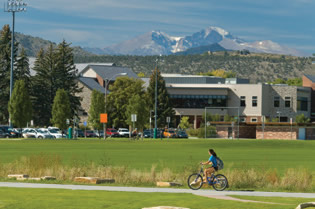
PHOTOS COURTESY OF COLORADO STATE UNIVERITY
Why is Colorado State so committed to sustainability? “As a land-grant institution, sustainability is in our blood. Since our first campus farm started in the 1880s we have been committed to sustainability education and related hands-on research and engagement. Today, 86 percent of CSU students say that sustainability is important to them, so our students, and the passion of our faculty and staff, continually drive integration of sustainability into our courses, research, operations and engagement.”
What are some of the simple things the school does for sustainability? “I’m not sure how ‘simple’ these are, but 962 of our 2,633 courses integrate sustainability, all eight of our colleges offer at least one sustainability-related major or minor and our School of Global Environmental Sustainability offers two interdisciplinary sustainability minors; 90 percent of our academic departments are engaged in sustainability-related research; we recycle 68 percent of materials on campus; we compost 93 percent of the food scraps from our dining centers; and 80 percent of CSU students register a bike on campus.”
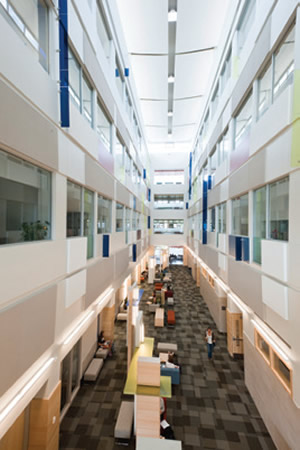
PHOTOS COURTESY OF COLORADO STATE UNIVERITY
WE’RE #1. Colorado State University was recently rated the Greenest University in America.
What are some of the more complex programs? “We offer more than a dozen sustainability immersion programs for students that range from four-week field courses at our mountain campus to intensive courses that take students to Kenya and Costa Rica. Our faculty is engaged in groundbreaking research related to climate change, food security, alternative transportation, clean water and infectious disease. Our Extension Office and Online Plus offer 532 sustainability-related continuing education courses across the state and online.”
Have there been any “moonshot” ideas or programs? “Our living labs are very innovative programs and ‘risky’ in the sense that they serve as an educational model and may or may not be successful or scalable. One example is our composting program — Housing & Dining Services invested $140,000 in an in-vessel composter on our Foothills Campus in the hopes of kick-starting a living lab in partnership with the Soil & Crop Sciences department on campus. This was a big investment with no guarantees, as we wanted the system to be operated by a different undergraduate student each semester as a hands-on learning and research opportunity.
Five years later, we have certainly learned a great deal. Our faculty advisor has been able to integrate the composter into her courses and we have now had more than a dozen undergraduate students successfully complete a semester as the compost intern, many of whom have now graduated, and they go onto vineyards, truffle farms and community gardens with their knowledge. It hasn’t been easy but the composter has certainly proven to be a successful living lab.”
MIAMI UNIVERSITY UPGRADES FOR SUSTAINABILITY
Located in Oxford, OH, Miami University recently renovated five residence halls on their East Quad with sustainability in mind. The buildings range in vintage from 1940 through the mid-1950s, and upgrades included adding insulation and changing out windows. While both of those improvements increase the residences’ energy efficiency, it was the addition of a new heating/cooling system coupled with sophisticated controls that really brought these buildings to the state of the art.
The university’s old steam heating plant was traded out for a modern heat pump chiller system that is used for simultaneous heating and cooling. “There’s a fan coil in each room that allows individual control,” says Matt Frericks, director of construction for Miami’s Housing, Dining, Recreation & Business Services department.
Even that individual control however, is controlled. Students can choose a temperature between 70 to 74 degrees while the room is occupied. When empty, the temperature can rise to no more than 78 degrees. The room is monitored at three points: a door switch, a motion sensor and a window switch. “The window sensor lets us know if the student is choosing fresh air and turns off the AC,” says Robert Bell, project manager.
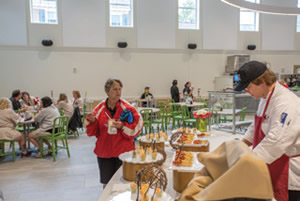
PHOTOS COURTESY OF MIAMI UNIVERSITY
WASTE TO WATER. Miami University has invested in multiple green energy initiatives, including a machine that turns the food waste from the dining hall into wastewater that won’t clog up landfills.
Miami University chose LED lights for the vast majority of spaces. They are also highly controlled. Lighting in public spaces like stairwells and hallways is dimmed on a schedule. If motion is detected, an occupancy sensor allows them to brighten and then dim again in 20 minutes or so.
Room lights are tied to a vacancy sensor. Different from an occupancy sensor that turns a light on and off, a vacancy sensor requires the user to manually turn the light on and then will shut it off after a designated time. Vacancy sensors have two distinct advantages. “A student has to choose to turn the light on,” explains Bell. “Their room may be bright enough without it. Also it’s great if your roommate comes home at 2 a.m..” As the remodels were completed in August, Bell and Frericks don’t yet know exactly how much energy and money the new innovations are saving. However, based on past projects on campus they predict a better than 30 percent savings here. “That’s great considering these buildings didn’t have central air conditioning before,” says Frericks.
They also expect a simple payback for the system in five to 10 years.
PORTLAND COMMUNITY COLLEGE-NEWBERG’S $3 MILLION NET ZERO BLUNDER… AND THE SILVER LINING
Three years ago, Portland Community College (PCC) opened the Newberg Center in Newberg, OR, to many accolades. The classroom building was the second net-zero structure in the nation, meaning that it consumed no more energy than it generated. The American Institute of Architects named it one of the “Environment Top Ten Projects” in the U.S. in 2012. This year, the roofing system failed so badly that classes were moved to portables while the school replaces it. The cost: $3 million.
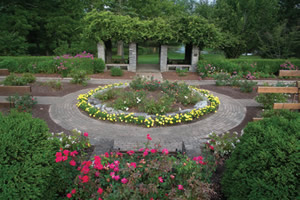
PHOTOS COURTESY OF MIAMI UNIVERSITY
GROUNDED. Miami University extends its sustainability efforts to the landscaping around the East Quad project with native plants.
The roof system, structural insulated panels (SIP), has had problems in the past. Condensation can get into the airtight panels, causing them to degrade. However, “According to six green building experts, developers and architects, the panels work when properly installed and designed,” according to a September 9, 2015, article in the Oregonian by Nick Budnick. “But they can be rot prone when architects or construction crews lack experience with the panels.”
Presently there’s an investigation pending on why the Newberg Center’s roof failed, and the school will not speculate on the cause until it’s finished. “As part of our investigation, we are reviewing the chronology of all steps taken leading up to, and throughout, construction of the Newberg Center. We are assessing all decisions made,” says Linda Degman, director, Bond Program, PCC, via email.
While the $3-million price tag is painful for sure, Degman sees the bright side. “This process is positive; it is always in our best interest to review and modify planning, if need be, as a means to tighten protocol and decision-making.”
Despite it all, the school remains committed to sustainability. “PCC…stands behind its college-wide goal to create energy-efficient buildings. The use of green technologies and energy-saving approaches — like net-zero energy — remains an important part of PCC’s commitment to sustainability and its Climate Action Plan,” says Degman.
This article originally appeared in the issue of .